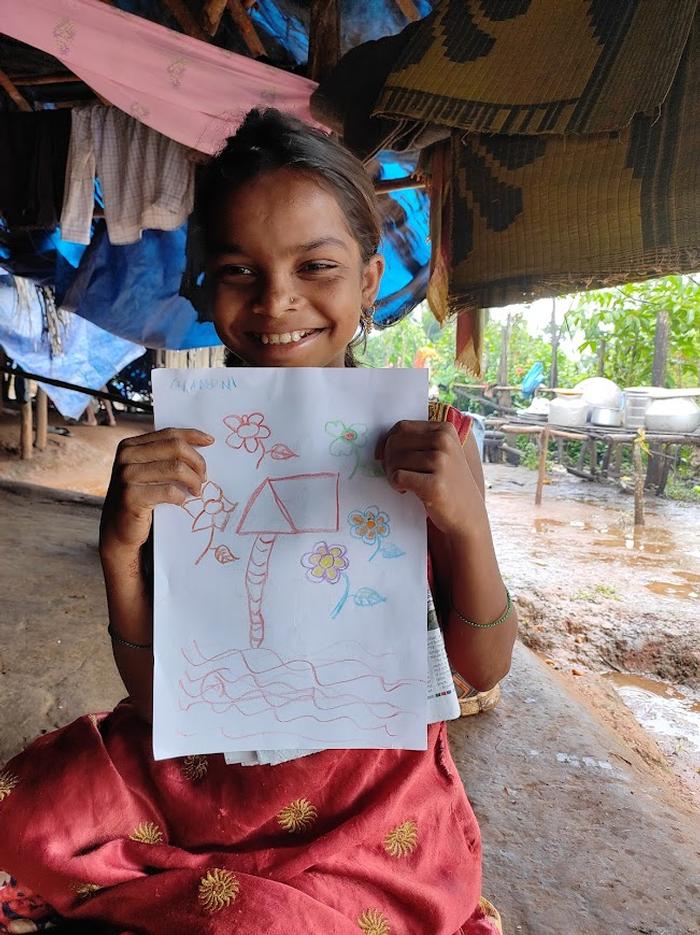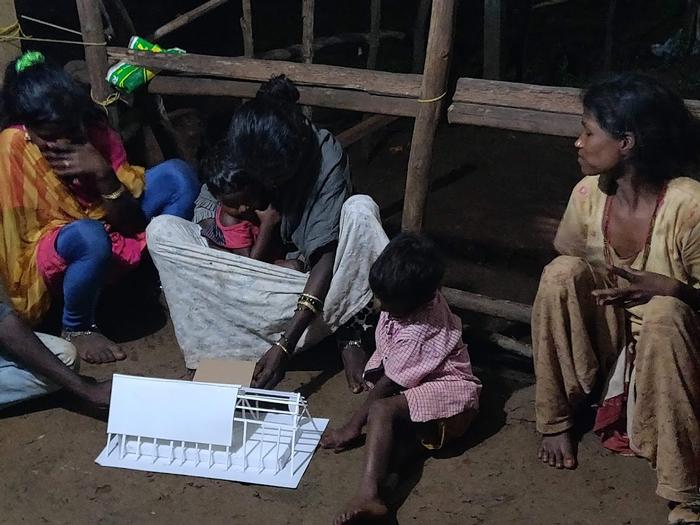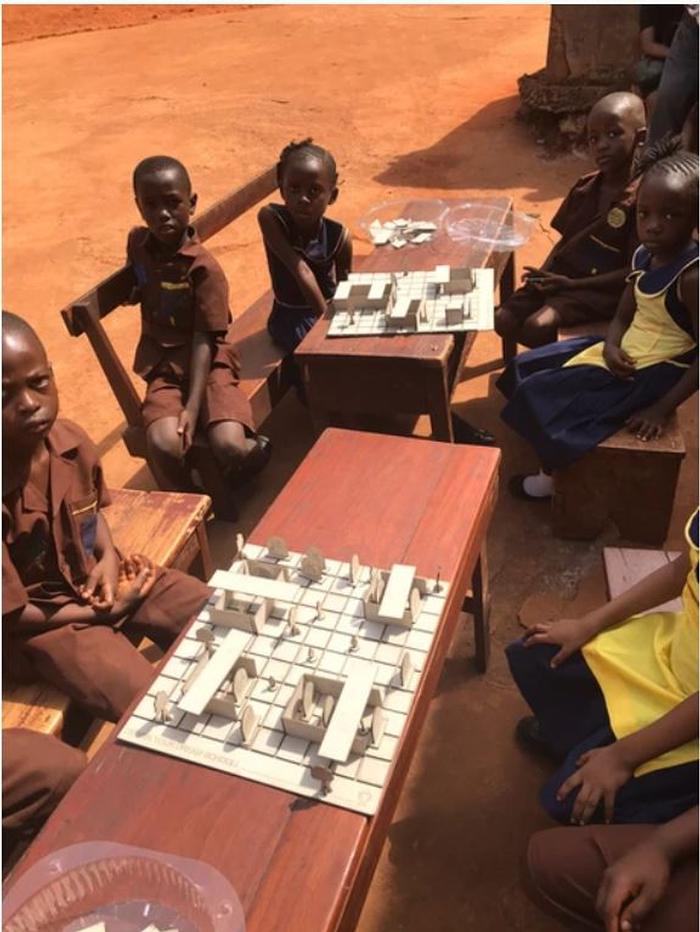Saavi Netakar - ProposalBuilding Together; a library and a community.“A marriage between personal creative urge and the unspoken dreams of the clients is called architecture” B V Doshi I believe social change is not just a product of architecture, but its inherent quality. We design for the people and it is their aspirations that shape the space, characterised by stark inequalities, often urging us to question our role as architects. The celebration of self-expression within the profession has put the architect on a pedestal overshadowing the people. But so much can be done, so many lives can be impacted even through the smallest and most humble structures. Decades ago, my grandfather emigrated to Goa, “the Rome of the East”, from a small village in the neighbouring state of Maharashtra. Known for its distinct Portuguese heritage and over fifty beaches lining its coast, it is the smallest state of India. But little is known about the indigenous population of the state beyond just a chapter in history textbooks of our high school education. Amidst the pandemic, a news article caught my attention; “Vanarmare tribe struggling to get food”. With the breakdown of the food supply chain from the neighbouring states, everyone was rationing out their supplies, but there was something unsettling about the headline. When I researched about this group, the only news article on them was dated in 2016. Last time they were in the news was when their settlement was brutally attacked by their ‘civilised’ neighbours, their homes ransacked and roofs torn apart. Does it really take a gross failure of humanity to act upon the disparity around us? The Vanarmare (vanar:monkey; mare: killer) are one of the few surviving nomadic tribes in Goa. They were traditionally employed by farmers to hunt down pests that would attack their crops. But as the years passed, they had to turn to daily wage labour for sustenance. While they left behind their nomadic practices, the stigma associated with them remained. Almost a year since reading the news article, I had the opportunity to engage with the tribe in the form of OAN Fellowship Competition. It is an yearly grant seeking proposals to bring about change in our local communities, giving architecture students an opportunity to translate the ‘social art of architecture’ beyond their classrooms. As we approached their settlement they were initially extremely hesitant; empty promises and incomplete projects had been coming their way since the attack. But with every consecutive visit, we found women and children slowly opening up to us. As we engaged with the community, problem identification became a natural course of our conversations. While most members were casual labourers they yearned for a better future for their children. “I would like my son and daughter to study and learn skills. It is very important for them,” said Gopal, the leader of the tribe. Designing with the community, we came up with the Idea of Vangad. The proposal was shaped as a community centre that would also function as a training centre and a classroom. The structure would be built with the members of the community, using materials they were familiar with. The process of construction would also become a process of learning for the community. The centre would house regular training drives, Sunday classrooms as well as health camps, aiming to bring the school back to the children. While work with the Vanarmare continued, I was constantly redefining my understanding of the role of Architecture. As I trained to be a better architect, I came across Aziza Chaouni’s work talk “How I brought a River and My City back to Life”. Initially developed as her thesis research project, it was realised into a site- as well as city-level intervention to revitalise the Fez river and the spaces along its course through the Medina. In just eleven years, Aziza has integrated users and stakeholders throughout her design practice in Morocco and Toronto. She is also committed to researching and making resilient and environmentally-sensitive designs, buildings, neighbourhoods and cities. This year when I reached out to Aziza with the opportunity for a travel fellowship, she was more than thrilled to have me contribute to her work at Lam Alif. Lam Alif (named after letters of the Arabic alphabet) is a non-profit association dedicated to democratising access to culture by creating book-based activities in public schools across the Taounate region. Known for their harvest of apples, cherries and olives, the rural community in Taounate leads an isolated life in the Atlas Mountains. By nurturing curiosity and a hunger for education among the children, Lam Alif is helping combat rising school dropouts that can lead to child labour and other social ills. But Lam Alif's goal extends beyond mobile libraries and classrooms. With the National Literacy Program, the association aims to build a media library in Beni Oulid, a village high in the mountains of the Taounate region. This media library will not only facilitate children's access to knowledge, but also contribute to the improvement of their living conditions by giving them a better chance of academic success. The design is a simple shed structure with an open plan hall, which can be subdivided with a flexible felt curtain into a reading room and a computer room. The concrete pipes are recycled as walling material that would otherwise be destined for landfills, with the local cedar wood forming the structural posts. The design embodies the values of a shared culture; resilience and innovation, while developing a conducive environment - for the children as well as the whole population of the village. With the Berkeley Prize Travel Fellowship, I am proposing to work with Aziza Chaouni Projects for two months (July and August 2023). This volunteering opportunity would allow me to work on empowering indigenous communities by helping to build projects like the Children's Media Library in Beni Oulid. I will have the chance to participate in the library's prototyping and sitework phases, engage directly with the local community, develop design tools, and follow up to the process of its execution. I want to document every stage of the journey from Mumbai to Fes and back using photographs, sketches, interviews, and observations, to be added to my report to the Berkeley Prize Committee. Itinerary: - June Last Week - Fly from Mumbai, India to Casablanca, Morocco, via Barcelona,Spain. Followed by a 180 mile journey from Casablanca to Fes. - July to September, 2 months volunteering for Lam Alif Media Library with Aziza Chaouni Projects in Fez and Beni Oulid . - September first week - Conclusion of the volunteering period. Fly to Mumbai from Fes via Barcelona. Budget: -Round Trip airfare USD 1860. Mumbai-Barcelona, Barcelona-Casablanca and back.* (Qatar Airways, Air Arabia Maroc) -Casablanca Airport to Fes and back, transportation expenses, USD 40. -Living Cost (July - September) USD 1800 (900 USD/month, including food, accommodation and auxiliary living cost.) Total Expenditure - USD 3700. Any expenditure apart from the above mentioned will be borne by me. References: -Dr. Sandeep Sankat, Head of Department (Architecture) , School of Planning and Architecture, Bhopal.(E-mail:sandeepsankat@spabhopal.ac.in) -OAN Fellowship Grant 2021, visit: https://centerforthelivingcity.org/oan or https://nasaindia.co/OAN/OAN2?yearid=34 -The Vangad Project, follow our work at: https://www.instagram.com/vangad.goa/ -Lam Alif Association (website: https://www.lamalif.org/) -Aziza Chaouni, Principal Architect, Aziza Chaouni Projects ( E-mail: Ac@azizachaouniprojects.com ) or visit, https://www.azizachaouniprojects.com/ -For further details about the project visit, https://www.lamalif.org/_files/ugd/2e9308_438760b111304b508e629b36262f3e19.pdf Additional Help and InformationAre you in need of assistance? Please email info@berkeleyprize.org. |




